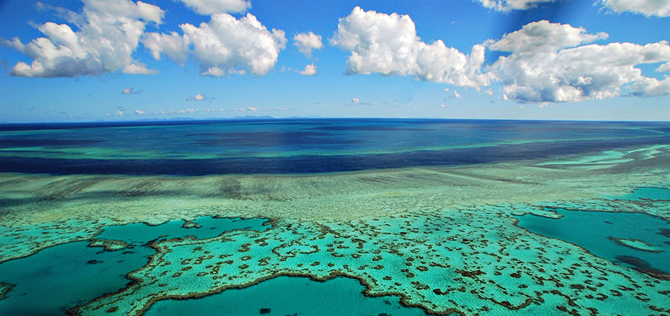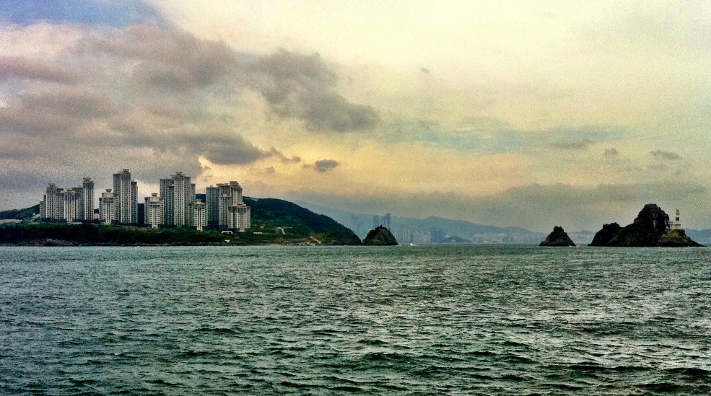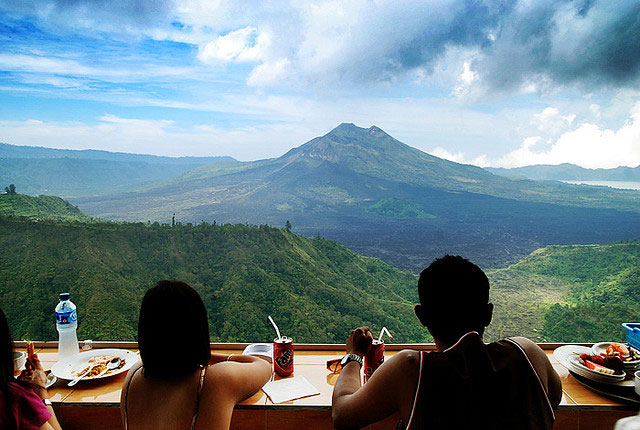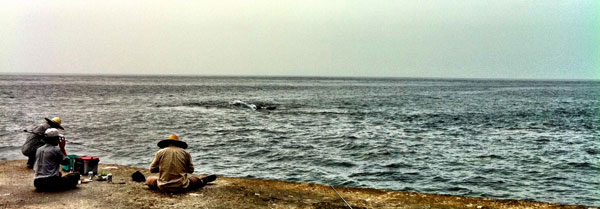Travel & Explore The Great Barrier Reef

The entire ecosystem was declared a UNESCO World Heritage Site in 1981 due to the incredibly diverse sea life that inhabits the area, some of which we take a look at below.
Coral
Although many may mistake coral for a type of sea plant, it is in fact a marine animal. Individual coral polyps combine to make coral colonies. When these grow large enough, they become coral reefs like the Great Barrier Reef. The formation of these reefs is caused by the calcium carbonate that the coral colonies secrete, in the process creating a sort of exoskeleton to protect themselves. In turn, reefs create entire ecosystems, supporting many other types of sea life.
Dugong
The dugong, also referred to as a sea cow, is a large marine mammal. Its existence is being threatened by hunting, and some fear that it may suffer the same fate as its nearest evolutionary relative, Steller’s sea cow (Hydrodamalis gigas), which was hunted to extinction in the 18th century. Dugong feed in relatively large numbers in the Great Barrier Reef, which is thought to be home to a population of around 10,000 of these amazing animals.
Dolphin
Various types of dolphins frequent the Great Barrier Reef. The most common of these is the Bottlenose Dolphin, which is know for its inquisitive, playful nature. Many visitors to the Reef get the chance to swim with these dolphins, or at least see them frolicking in the wake of tour boats. A less commonly sighted dolphin to be found in the Great Barrier Reef area is the Indo-Pacific humpback dolphin, identifiable by its strange-looking humped back and elongated dorsal fin.
Green Sea Turtles
The endangered green sea turtle is so common in the Great Barrier Reef that it has been split into two distinct populations; one in the north and one in the south. A dense undergrowth of sea grass provides the turtles with food.
Cuttlefish
The cuttlefish is not a fish but a cephalopod, or a member of the Mollusca class Cephalopoda. The name of this class comes from the Greek word kephalopoda, meaning “head-feet” – given that these animals appear to consist only of a head with tentacles. The cuttlefish is one of the Great Barrier Reef’s many cephalopods. One of the features that makes it special is its ability to change colour in order to avoid predators. Other curious characteristics of this strange creature are that it has three hearts and turquoise blood.
Maori Wrasse
The fish that many divers come to the Great Barrier Reef to see, the Maori wrasse, also known as the humphead wrasse, is easily identifiable by its characteristic forehead bump, as well as its intricate patterning and luminescent colouring. Maori wrasse are large, slow-moving fish – measuring up to 2 metres in length – and have a life span of up to 25 years. Unfortunately, illegal sport fishing has led to this fish becoming an endangered species.
Post courtesy of travel blogger Jeff who’s writing for www.thomascooktours.com – a UK tour operator offering escorted holidays to Australia (link) which incorporate trips to the stunning Great Barrier Reef.







